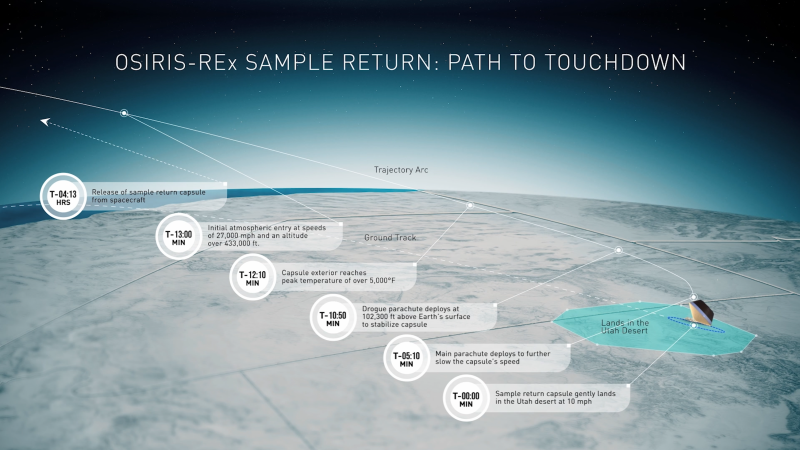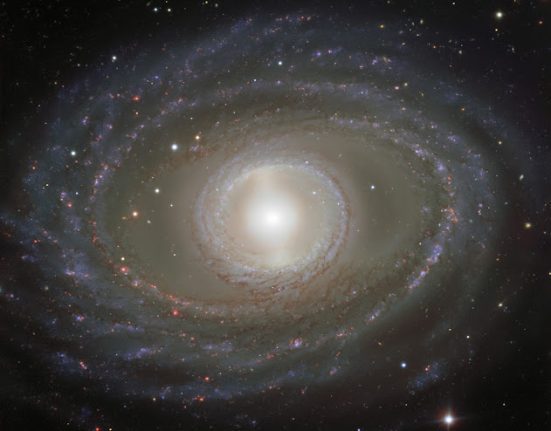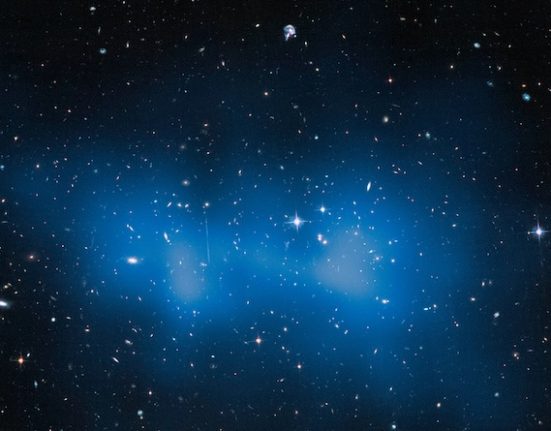
Originally published June 26, 2024 on NASA.gov. Edited by EarthSky.
- A type of rock mirror found at Earth's mid-ocean ridges. It was found by analyzing the sample of the asteroid Bennu returned by NASA's OSIRIS-REx mission in September 2023.
- The magnesium sodium phosphate found in the sample. suggests the asteroid may have broken off from a small, ancient, primitive ocean world.
- The Japanese Hayabusa2 mission also delivered an asteroid sample It returned to Earth in 2020. It came from the asteroid Ryugu and revealed a similar phosphate.
Scientists have eagerly awaited the chance to dig into the pristine 4.3-ounce (121.6-gram) sample of asteroid Bennu collected by NASA. Osiris-The REx spacecraft has been on the move since it arrived at Earth last fall. They hoped the material would hold secrets of the solar system’s past and the prebiotic chemistry that could have given rise to life on Earth. An early analysis of the Bennu sample shows that this enthusiasm was justified. A type of rock in the sample suggests the asteroid might have broken off from a tiny, primitive ocean world that disappeared long ago.
The OSIRIS-REx sample analysis team discovered that Bennu contains the original ingredients that formed our solar system. The asteroid dust is rich in carbon and nitrogen, as well as organic compounds, all essential components for life as we know it. The sample also contains sodium magnesium phosphate, which was a surprise to the research team because it had not been detected in remote sensing data collected by the spacecraft on Bennu. Its presence suggests an oceanic origin.
The newspaper Meteorites and planetary science published this new work on June 26, 2024.
OSIRIS-REx is the first U.S. mission to collect a sample from an asteroid. It was launched on Sept. 8, 2016. The spacecraft traveled to the near-Earth asteroid Bennu and collected a sample of rocks and dust from the surface. It delivered the sample to Earth on Sept. 24, 2023.
The spacecraft is currently located en route to the infamous asteroid Apophiswhich will arrive in April 2029, just when the asteroid passes close to Earth.
Asteroid Bennu sample reveals a phosphate surprise
Analysis of the Bennu sample revealed interesting information about the asteroid's composition. The sample, which is dominated by clay minerals, particularly serpentine, reflects the type of rock found at Earth's mid-ocean ridges, where material from the mantle, the layer beneath the Earth's crust, comes into contact with water.
This interaction not only leads to the formation of clay, but also gives rise to a variety of minerals such as carbonates, iron oxides and iron sulfides. But the most unexpected discovery is the presence of water-soluble phosphates. These compounds are components of the biochemistry of all known life on Earth today.
While a similar phosphate was found in the sample of the asteroid Ryugu returned by JAXA (Japan Aerospace Exploration Agency) In the Hayabusa2 mission's study in 2020, the sodium magnesium phosphate detected in the Bennu sample stands out for its purity — that is, the absence of other materials in the mineral — and the size of its grains, unprecedented in any meteorite sample.
The discovery of magnesium and sodium phosphates in the Bennu sample raises questions about the geochemical processes that concentrated these elements and provides valuable clues about Bennu's historical conditions. Dante Laurettaco-lead author of the paper and principal investigator of OSIRIS-REx at the University of Arizona, Tucson, said:
The presence and state of phosphates, along with other elements and compounds on Bennu, suggest a watery past for the asteroid. Bennu could potentially have been part of a wetter world. Although this hypothesis requires further research.
Jason DworkinCo-author of the paper and OSIRIS-REx project scientist at NASA's Goddard Space Flight Center in Greenbelt, Maryland, said:
OSIRIS-REx gave us exactly what we expected: a large sample of pristine, nitrogen- and carbon-rich asteroid from a formerly wet world.

From a young solar system
Despite its possible history of interaction with water, Bennu remains a chemically primitive asteroid, with elemental proportions very similar to those of our sun. Laureta said:
The sample we brought back constitutes the largest reserve of unaltered asteroid material currently on Earth.
This composition offers a glimpse of the early days of our solar system, more than 4.5 billion years ago. These rocks have preserved their original state, without having melted or solidified since their creation, confirming their ancient origins.
Tips on the basics of life
The team has confirmed that the asteroid is rich in carbon and nitrogen. These elements are crucial to understanding the environments where Bennu's materials originated and the chemical processes that transformed simple elements into complex molecules, potentially laying the foundation for life on Earth. Laurata said:
These findings underscore the importance of collecting and studying material from asteroids like Bennu, especially low-density material that would normally burn up upon entering Earth's atmosphere.
This material holds the key to unraveling the intricate processes of solar system formation and the prebiotic chemistry that could have contributed to the emergence of life on Earth.
Whats Next?
Dozens more labs in the United States and around the world will receive portions of the Bennu sample from NASA's Johnson Space Center in Houston in the coming months. And many more scientific papers describing the OSIRIS-REx sample analysis team's analyses of the Bennu sample are expected in the coming years. Harold Connollyco-lead author of the paper and OSIRIS-REx mission sample scientist at Rowan University in Glassboro, New Jersey, said:
The Bennu samples are extraterrestrial rocks of mesmerizing beauty. Each week, analysis by the OSIRIS-REx sample analysis team provides new and sometimes surprising findings that help establish important constraints on the origin and evolution of Earth-like planets.

Bottom line: NASA's OSIRIS-REx mission delivered a sample of the asteroid Bennu to Earth in late 2023. Analysis of the sample shows a type of rock reflection found on Earth's mid-ocean ridges.













Leave feedback about this